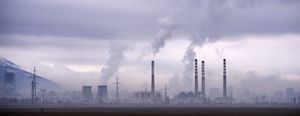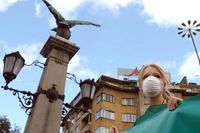Difference between revisions of "ISSS608 2018-19 T1 Assign Pu Yiran"
| Line 53: | Line 53: | ||
</font> | </font> | ||
| − | + | =<font face="Book Antigua"; size=5>'''The Task'''</font>= | |
# [[Task 1: Spatio-temporal Analysis of Official Air Quality]] | # [[Task 1: Spatio-temporal Analysis of Official Air Quality]] | ||
# [[Task 2: Spatio-temporal Analysis of Citizen Science Air Quality Measurements]] | # [[Task 2: Spatio-temporal Analysis of Citizen Science Air Quality Measurements]] | ||
Revision as of 22:39, 16 November 2018
|
Background & Introduction |
|
|
|
|
Contents
What's Happening in Bulgaria
Air pollution is an important risk factor of health in Europe and worldwide, as there is convincing evidence that the primary air pollutant PM10 and PM2.5, regardless of source, have detrimental health effects. The most important anthropogenic sources of PM in ambient air in Europe are exhaust and non-exhaust emissions from road traffic and combustion of solid biomass.
Bulgaria, among European countries, is said to have the dirtiest air, with PM10 and PM2.5 overshooting EU limit. Urban populations in Bulgaria are exposed to the increasing risk of heart disease, lung cancer, respiratory diseases and stroke.
Bulgaria’s main sources of PM10, and fine particle pollution PM2.5 (particles 2.5 microns or smaller) are household burning of fossil fuels or biomass, and transport. Production of electricity by burning of coal in thermal power plants and other industrial processes are a major contributor to unhealthy air.
What are PM10 and PM2.5
PM (particulate matter) is a mixture of solids and liquid droplets floating in the air.PM10(Coarse dust particles) is particle matter 2.5-10μm in diameter and PM2.5(Fine particles) is particle matter 2.5 μm or less in diameter.
Sources of PM10 include crushing or grinding operations and dust stirred up by vehicles on roads. PM2.5 are produced from all types of combustion, including motor vehicles, power plants, residential wood burning, forest fires, agricultural burning, and some industrial processes.
Usually PM10 can be seen especially when the concentration is high, while PM2.5 is invisible to naked eyes but only visible under with an electron microscope, thus, urban population may not be conscious that they are exposed in PM2.5 pollutant. Normal mask can’t protect people from micro-particles such as PM2.5, thus, as air pollution level increases worldwide, N95, N99 and P95 air masks have came out to protect people from micro-particles.
The Task
- Task 1: Spatio-temporal Analysis of Official Air Quality
- Task 2: Spatio-temporal Analysis of Citizen Science Air Quality Measurements
- Task 3



